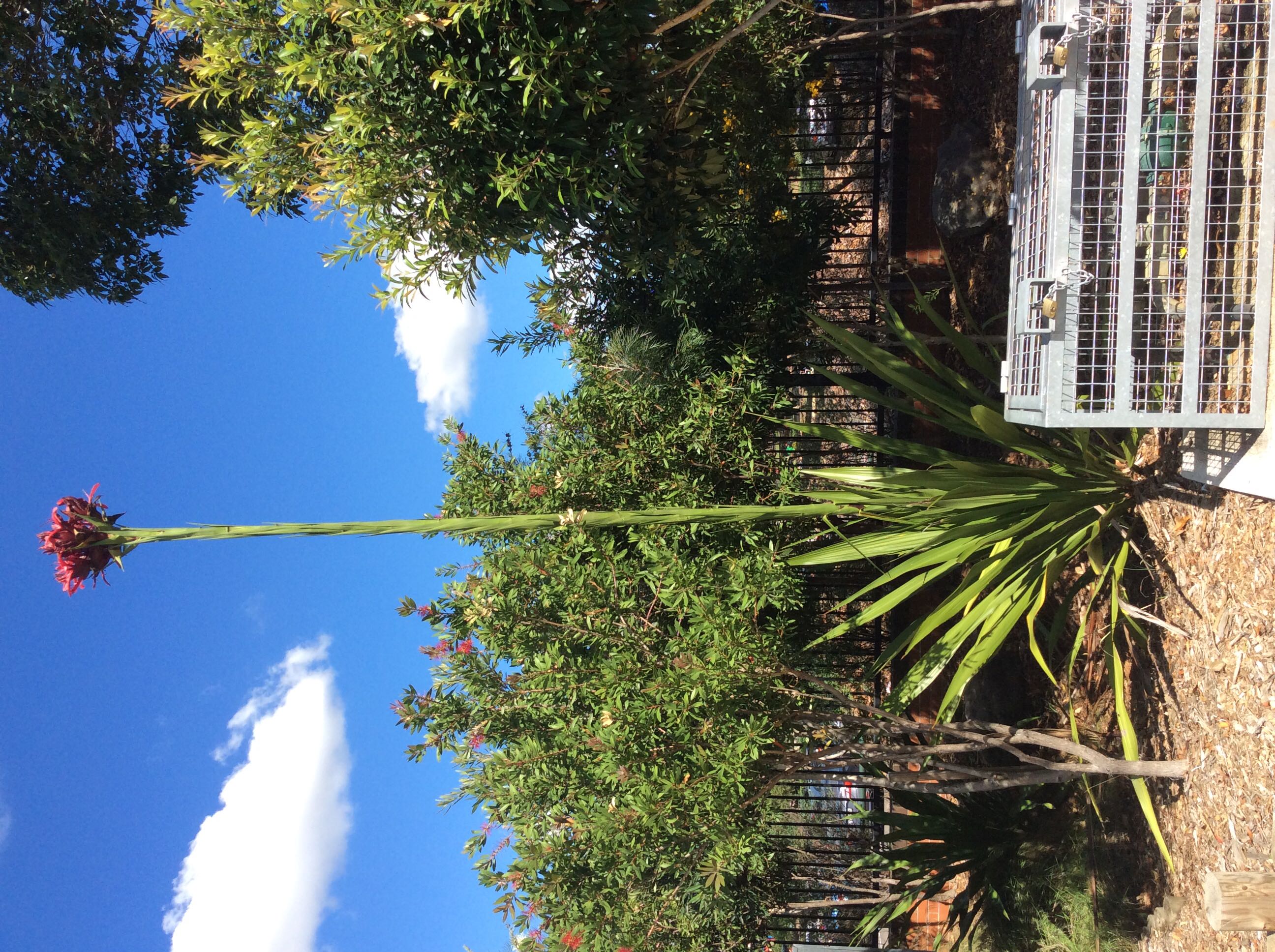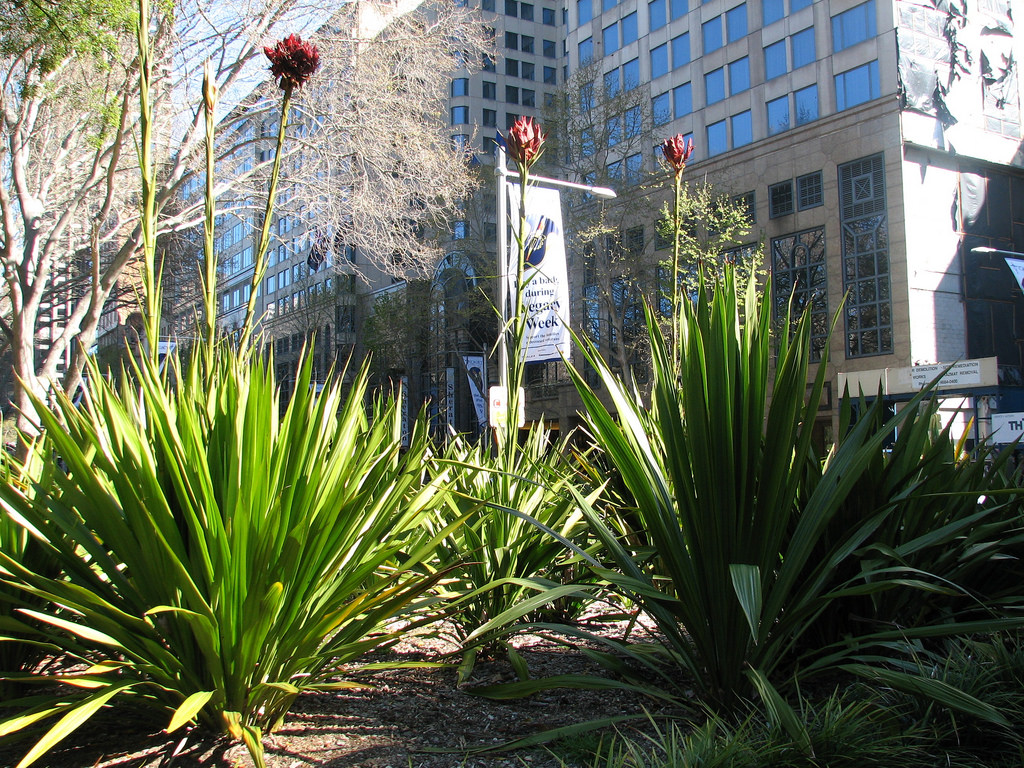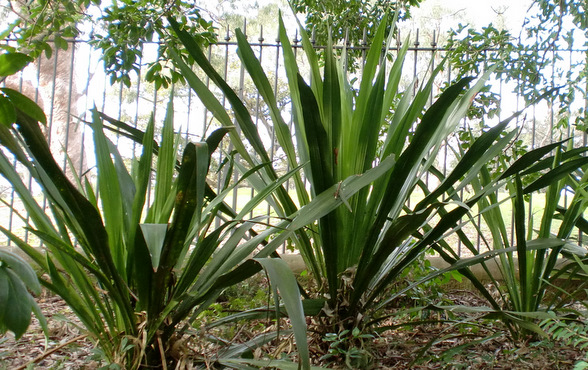Fruits/Seeds
A red-brown, woody seed pod, which is 7 – 10 cm long, contains flat, brown seeds which are 1.5 – 2.5 cm long.
Field Guide
Improve your identification skills. Download your Gymea Lily field guide here!

Giant tussock-like, rosette plant. Grows up to 2.5 m high with a flower stalk up to 5 m high!
Its genus name Doryanthes (meaning spear and flower), and its species name excelsa (meaning high), both refer to its tall flower stem.
Long, sword-shaped and forming a clump. Each individual leaf is 1 – 2.5 m long and about 10 cm wide. Shorter leaves up to 30 cm long are found along the flower stem.
Located at the top of a single flower stem which grows from the centre of the tussock of leaves. The stem is 2 – 5 m high upon which the flowers form a cluster up to 70 cm in diameter. The individual flowers are bright red (or rarely white), trumpet-shaped and 10 – 16 cm long.
A red-brown, woody seed pod, which is 7 – 10 cm long, contains flat, brown seeds which are 1.5 – 2.5 cm long.
Improve your identification skills. Download your Gymea Lily field guide here!

First fully open single flower
Full flowering (record all days)
End of flowering (when 95% of the flowers have faded)
Open seed pods containing seeds (record all days)


Waratah (Telopea speciosissima) has shorter leaves (8 – 28 cm long), usually with serrated edges, that don’t grow in a clump or tussock from the ground. The flower stem is also much shorter, and the flower cluster much smaller (only 7 – 10 cm diameter).